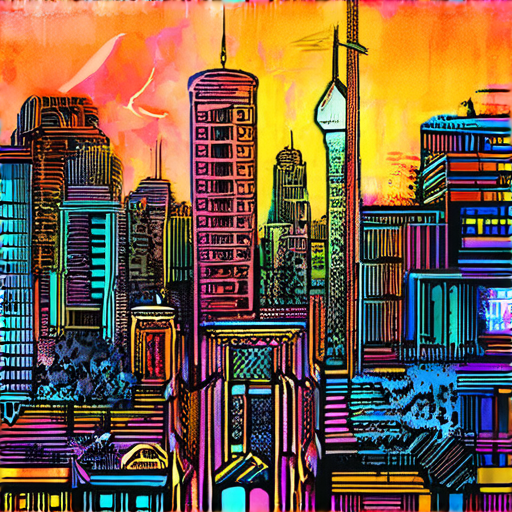In today’s rapidly evolving world, cultural updates play a significant role in shaping our societies, influencing our daily lives, and impacting the way we interact with one another. As we navigate through the complexities of cultural change and revolution, it becomes increasingly important to understand the intricacies of these shifts and their far-reaching consequences. From cultural renewal and revival to cultural bias and upheaval, there are numerous factors at play that contribute to the ever-changing landscape of our global community.

Cultural Changes
I’m excited to share various examples of cultural changes that have shaped our world.
-
Globalization
- The increasing interconnectedness of the world has led to a shift in cultural values, with people embracing diversity and inclusivity.
- This change has been driven by advancements in technology, transportation, and communication, making it easier for people to interact and exchange ideas across borders.
- As a result, we’re seeing a rise in globalized cultures, where traditions and customs are blending together to create something unique and dynamic.
-
Digital Transformation
- The widespread adoption of digital technologies has revolutionized the way we live, work, and communicate.
- This transformation has brought about significant cultural shifts, including the rise of remote work, e-commerce, and social media.
- As a result, traditional notions of community and identity are evolving, with people forming connections and communities online.
-
Sustainability and Environmentalism
- The growing awareness of environmental issues has led to a cultural shift towards sustainability and eco-friendliness.
- People are becoming increasingly conscious of their carbon footprint and are adopting lifestyles that minimize harm to the planet.
- This change is driving innovation in renewable energy, sustainable agriculture, and eco-friendly products.
-
Diversity, Equity, and Inclusion
- The recognition of systemic inequalities and biases has sparked a cultural movement towards greater diversity, equity, and inclusion.
- Organizations and individuals are working to create more inclusive environments, where everyone feels valued and respected.
- This change is leading to a more equitable distribution of opportunities and resources, promoting social justice and human rights.
Cultural Renewal: Examples and Significance
I’m excited to share examples of cultural renewal and its significance.
- The revival of indigenous languages is a great example of cultural renewal. Many communities around the world are working to preserve and promote their native languages, which are often tied to their cultural heritage and identity.
- The adaptation of traditional festivals with modern elements is another example of cultural renewal. By incorporating contemporary themes and styles, these festivals can attract new audiences and help to revitalize cultural traditions.
- The preservation of traditional crafts and arts is also an important aspect of cultural renewal. By learning and passing down traditional skills and techniques, individuals can help to keep cultural heritage alive and thriving.
- The revitalization of cultural landscapes is another example of cultural renewal. This can involve restoring historic buildings, preserving natural environments, and promoting sustainable tourism practices.
Cultural renewal is essential for preserving our shared human heritage and promoting cross-cultural understanding. By embracing and celebrating our diverse cultural traditions, we can foster greater empathy and cooperation among people from different backgrounds.
Examples of Cultural Renewal in Action
- The Maori language revitalization project in New Zealand is a notable example of cultural renewal. Through community-led initiatives, the Maori language has been preserved and promoted, helping to revitalize Maori culture and identity.
- The Indian festival of Holi has been adapted with modern elements, such as electronic dance music and social media campaigns, to appeal to younger generations and attract new audiences.
- The traditional Japanese art of woodblock printing has been revived through collaborations between artists and technology companies, resulting in innovative and visually stunning works of art.
- The restoration of the ancient city of Petra in Jordan is an example of cultural landscape revitalization. Through conservation efforts and sustainable tourism practices, the site has been preserved for future generations to enjoy.
Conclusion
Cultural renewal is a powerful force for preserving our shared human heritage and promoting cross-cultural understanding. By embracing and celebrating our diverse cultural traditions, we can foster greater empathy and cooperation among people from different backgrounds.

Cultural Bias Example in Modern Day
In today’s diverse and interconnected world, cultural bias remains a pervasive issue that affects various aspects of our lives.
- Social Media Platforms: Social media platforms like Facebook, Instagram, and Twitter often reflect and perpetuate cultural biases through algorithms, content moderation, and user interactions.
- News Outlets: News outlets may present biased reporting, selecting stories that cater to specific cultural perspectives, thereby influencing public opinion and shaping cultural narratives.
- Online Communities: Online forums, discussion boards, and social groups can become echo chambers, reinforcing cultural biases and limiting exposure to diverse viewpoints.
- Advertising and Marketing: Advertisers and marketers may target specific cultural groups with tailored messages, potentially reinforcing stereotypes and cultural biases.
Real-Life Examples:
- The representation of women in leadership positions in the tech industry is often limited, reflecting a broader cultural bias against women in STEM fields.
- The portrayal of minority groups in media, such as movies and TV shows, can perpetuate negative stereotypes and reinforce cultural biases.
- The emphasis on Western beauty standards in advertising and media can contribute to body dissatisfaction and low self-esteem among individuals from diverse cultural backgrounds.
Breaking Down Cultural Bias:
To overcome cultural bias, we need to engage in open-minded dialogue, challenge our assumptions, and seek out diverse perspectives.
- Cultivate Empathy: Practice active listening, ask questions, and try to understand the experiences and viewpoints of others.
- Seek Diverse Perspectives: Expose yourself to different cultures, read books and articles from diverse authors, and engage with people from various backgrounds.
- Challenge Assumptions: Question your own biases and assumptions, and be willing to change your perspective based on new information.
Learn more about promoting diversity and inclusivity on our website.
Cultural Lag in Today’s Society
Cultural lag refers to the phenomenon where societal norms, values, and behaviors fail to keep pace with technological advancements and changing circumstances.
-
Examples of Cultural Lag:
- The widespread adoption of smartphones, which has led to concerns about privacy, data sharing, and digital etiquette.
- The slow acceptance of electric vehicles, despite growing awareness of environmental issues and the need for sustainable transportation options.
- The ongoing debate about the ethics of artificial intelligence, highlighting the gap between technological progress and societal understanding.
-
Lack of Education and Awareness:
- Inadequate education and training can lead to a lack of understanding about emerging technologies and their implications.
- Insufficient awareness about the benefits and risks associated with new technologies can hinder their adoption.
-
Resistance to Change:
- Societal inertia and resistance to change can slow down the adoption of new ideas and technologies.
- Fear of the unknown and uncertainty about the consequences of change can contribute to cultural lag.
-
Power Dynamics and Social Hierarchy:
- Existing power structures and social hierarchies can influence the rate of technological adoption and the dissemination of knowledge.
- The privileged may have greater access to information and opportunities, exacerbating cultural lag among marginalized groups.
-
Economic Inequality:
- Cultural lag can perpetuate economic inequality by limiting access to new technologies and opportunities.
- The divide between those who adapt quickly and those who struggle to keep up can widen economic disparities.
-
Social Isolation and Fragmentation:
- Cultural lag can lead to social isolation and fragmentation as individuals and communities become disconnected from one another.
- The failure to adapt to changing circumstances can result in feelings of disorientation and confusion.
-
Environmental Degradation:
- Cultural lag can contribute to environmental degradation by delaying the adoption of sustainable technologies and practices.
- The continued reliance on outdated systems and habits can exacerbate ecological problems.
-
Education and Awareness:
- Investing in education and awareness campaigns can help bridge the gap between technological advancements and societal understanding.
- Raising awareness about the benefits and risks associated with new technologies can facilitate informed decision-making.
-
Encouraging Adaptability and Innovation:
- Fostering a culture of adaptability and innovation can help societies keep pace with technological changes.
- Embracing experimentation and learning from failures can accelerate progress and reduce the risk of cultural lag.
-
Addressing Power Dynamics and Social Hierarchy:
- Addressing existing power dynamics and social hierarchies can help ensure that all members of society have equal access to information and opportunities.
- Implementing policies and programs that promote equity and inclusivity can mitigate the effects of cultural lag.
-
The rapid advancement of technology has significantly contributed to cultural change, particularly in the way we communicate and interact with one another.
-
The widespread adoption of social media platforms has created new opportunities for people to connect and share ideas, but it has also raised concerns about the impact of digital communication on face-to-face interactions and deep relationships.
-
The increasing diversity of global populations has led to a greater awareness and appreciation of different cultures, but it has also created challenges for individuals and communities to adapt to changing social norms and expectations.
Causes of Cultural Lag:
Consequences of Cultural Lag:
Overcoming Cultural Lag:
Cultural Change in Today’s Society
Cultural change refers to the transformation of societal values, norms, and behaviors over time.
Factors Driving Cultural Change
-
Globalization and technological advancements have increased connectivity and access to information, leading to a more interconnected world.
-
Demographic changes, such as aging populations and urbanization, have altered traditional family structures and community dynamics.
-
Social movements and activism have pushed for greater equality and inclusivity, challenging long-held power structures and social hierarchies.
Impact of Cultural Change
-
Cultural change can lead to increased tolerance and understanding among diverse groups, promoting social cohesion and cooperation.
-
However, it can also result in feelings of disorientation and uncertainty, particularly for those who struggle to adapt to new social norms and expectations.
-
Cultural change can also have economic implications, as shifting consumer preferences and market demands require businesses to innovate and adapt to stay competitive.
Adapting to Cultural Change
To navigate the complexities of cultural change, individuals and organizations must be willing to learn, adapt, and evolve.
-
Stay informed about emerging trends and technologies to remain competitive and relevant.
-
Foster open communication and collaboration to build strong relationships and trust within communities.
-
Educate yourself about different cultures and perspectives to promote empathy and understanding.

US Examples of Cultural Lag
Cultural lag refers to the slow adaptation of non-material culture to rapid technological innovations, resulting in social issues.
- The evolution of social media has led to cultural lag, as societal norms and regulations struggle to keep pace with the rapid development of these platforms.
- The widespread adoption of ride-sharing services like Uber and Lyft has created cultural lag, as traditional taxi industries and regulatory frameworks have struggled to adapt to the changing landscape.
- The rise of e-commerce has resulted in cultural lag, as brick-and-mortar stores and shopping malls have had to adapt to the shift towards online shopping.
- The increasing use of virtual assistants like Alexa and Google Home has created cultural lag, as people are still getting used to interacting with technology in new ways.
- The growth of online education platforms has led to cultural lag, as traditional educational institutions and teaching methods have had to adapt to the changing needs of students.
- The proliferation of cryptocurrency and blockchain technology has resulted in cultural lag, as governments and financial institutions struggle to understand and regulate these new forms of currency.
- The increasing use of artificial intelligence and machine learning has created cultural lag, as people are still trying to understand how these technologies work and how they can be used.
- The rise of social media influencers has led to cultural lag, as traditional advertising and marketing methods have had to adapt to the changing ways in which people consume information.
- The growing use of augmented reality and virtual reality technology has resulted in cultural lag, as people are still getting used to interacting with immersive digital environments.
- The increasing use of biometric data and facial recognition technology has created cultural lag, as people are still trying to understand how these technologies work and how they can be used.
In conclusion, cultural lag is a common phenomenon that occurs when non-material culture fails to keep pace with rapid technological innovations. By understanding these examples, we can better appreciate the challenges and opportunities presented by cultural lag.

0 Comments